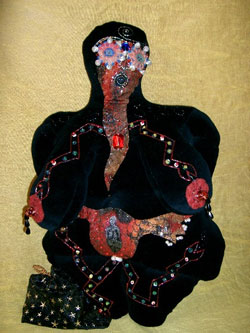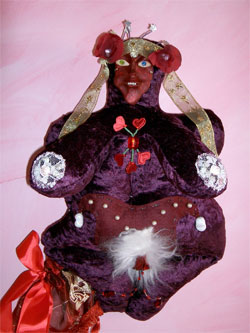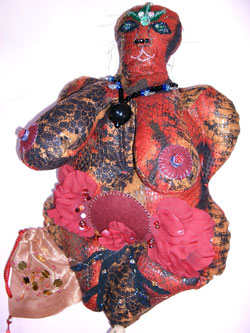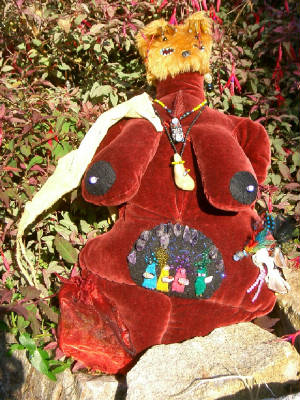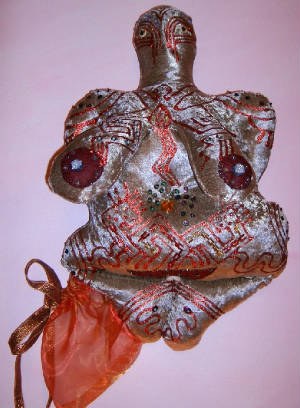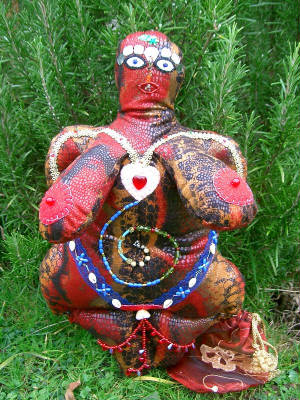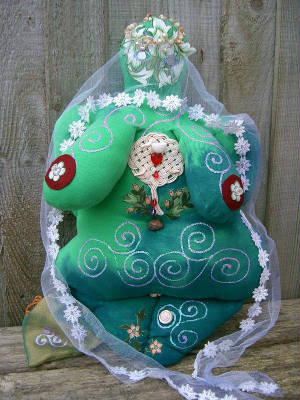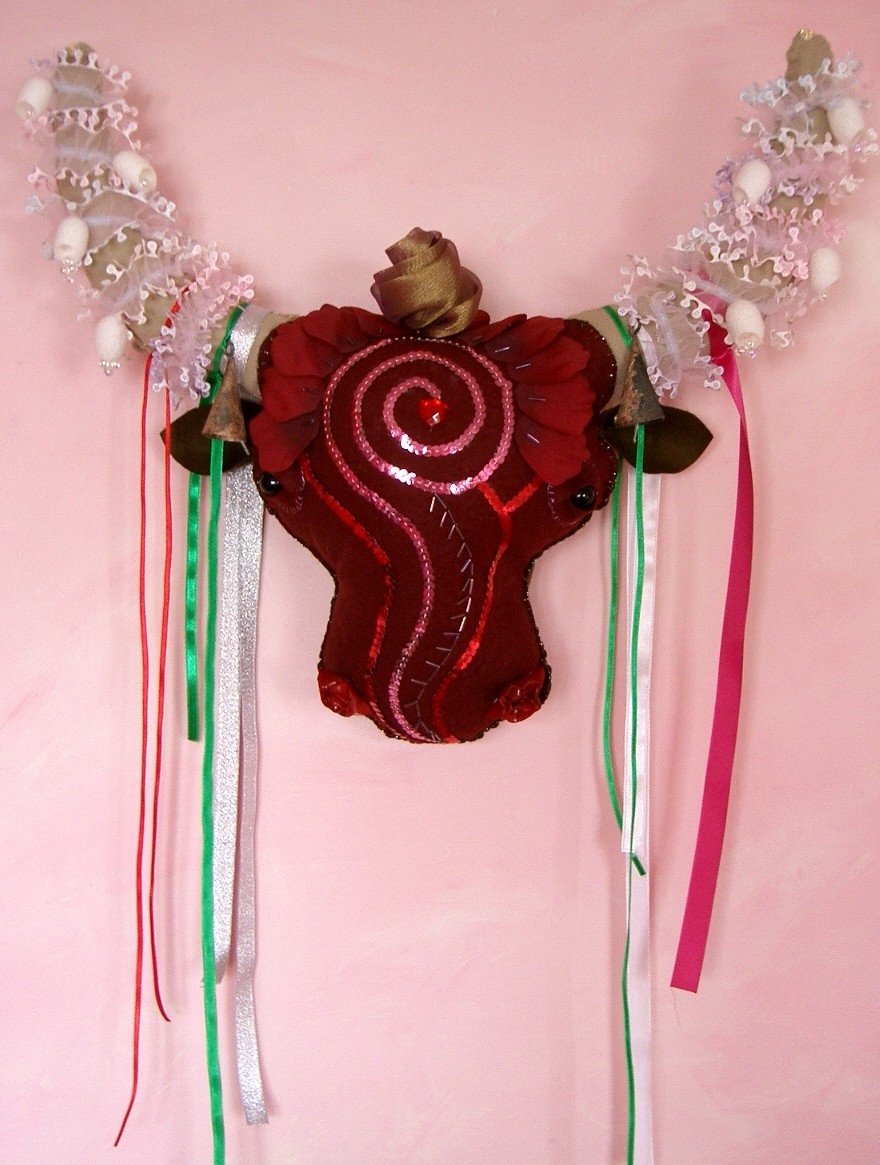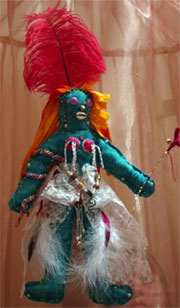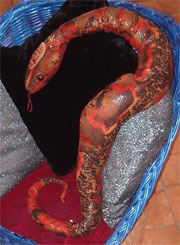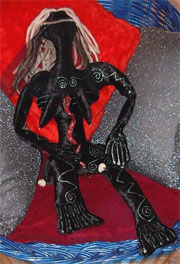|
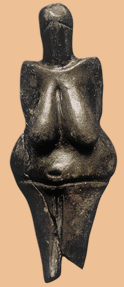
|
| Venus of Dolni Vestonice |
Based on a 26.000-years-old
female figurine, Venus of Dolni Vestonice
(Czech Republic)
This
4 1/2 inches so called fertility figure, one of the oldest
depictions of a woman and oldest pieces of pottery ever found, was kneaded from local clay mixed with bone ashes. Whilst
there were many ancient representations of Mother Goddess found all over Europe, this one comes from the country
of my birth and so became an artistic inspiration especially dear to my heart.
Read a personal account of a journey to Dolni Vestonice
| Lady of Avalon HuggaMama |
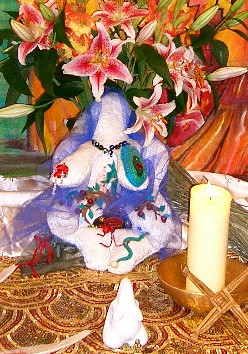
|
| At the Goddess Conference 2004, UK |
"...The body is a multilingual being. It speaks through its colour and its temperature, the flush of recognition, the
glow of love, the ash of pain, the heat of arousal, the coldness of nonconviction. It speaks through its tiny dance, sometimes
swaying, sometimes a-jitter, sometimes trembling. It speaks through the leaping of the heart, the falling of the spirit, the
pit at the centre, and rising hope.
The body remembers, the bones remember, the joints remember, even the little finger remembers. Memory is lodged in
pictures and feelings in the cells themselves. Like a sponge filled with water, anywhere the flesh is pressed, wrung, even
touched slightly, a memory may flow out in a stream.
To confine the beauty and value of the body to anything less than this magnificence is to force the body to live without
its rightful spirit, its rightful form, its right to exultation. To be thought ugly or unacceptable because ones beauty is outside the current fashion is deeply wounding to the natural joy that belongs to the wild
nature...."
"(My) second awakening (to the power of the body) involved a much older woman. Her hips were, according to common standard,
too pear-shaped, her bosom very tiny in comparison, and she had thin purple little veins all over her thighs, a long scar
from a serious surgery going around her body from rib cage to spine in the manner in which apples are peeled. Her waist was
perhaps four hands wide.
It was a mystery why men buzzed about her as though she were a honeycomb. They wanted to take a bite out of her pear
thighs, they wanted to lick that scar, hold that chest, lay their cheeks upon her spidery veins. Her smile was dazzling, her
gait so beautiful, and when her eyes looked, they truly took in what they were looking at. I saw again what I have been taught
to ignore, the power in the body. The cultural power of the body is its beauty,
but power in the body is rare, for most have chased it away with their torture of or embarrassment by the flesh.
It is in this light that the wildish woman can inquire into the numinosity of her own body and understand it not as
a dumbbell that we are sentenced to carry for life, not as a beast of burden, pampered or otherwise, who carries us around
for life, but as a series of doors and dreams and poems through which we can learn and know all manner of things. In the wild
psyche, body is understood as a being in its own right, one who loves us, depends on us, one to whom we are sometimes mother,
and who sometimes is mother to us."
From Women
who run with the wolves by Clarissa Pinkola Estes
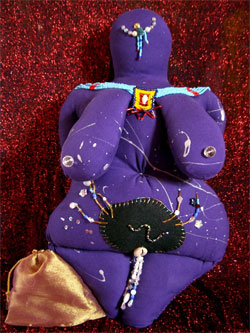
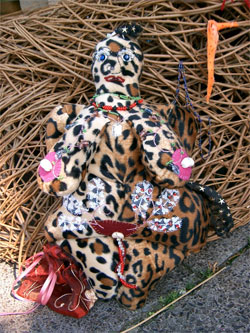
|
